Introduction
Multiple, twisted trunks with smooth, light grey bark, aromatic, dark green leaves, and clusters of blue-gray, waxy berries on female plants which are attractive to wildlife are just some of the reasons waxmyrtle is such a popular landscape plant. Most specimens form a multi-stemmed, open, rounded canopy of weak trunks and branches. This rapidly-growing, small, evergreen native tree is capable of reaching a height of 25 feet with an equal spread but is usually seen in the 10 to 20-foot range. Sometimes used as a large shrubbery screen, waxmyrtle is ideal for use as a small tree, the lower limbs removed to reveal its picturesque form. One, or several clustered together, provide pleasing dappled shade for terraces or patios.
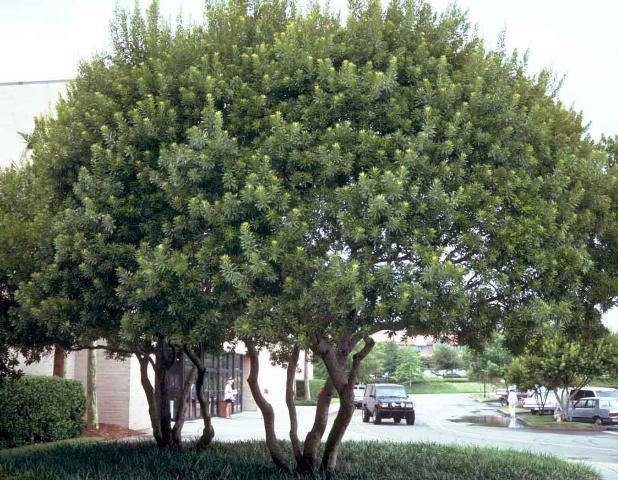
Credit: Ed Gilman, UF/IFAS
General Information
Scientific name: Morella cerifera
Pronunciation: more-EL-la ser-IF-er-uh
Common name(s): waxmyrtle, Southern waxmyrtle, southern bayberry
Family: Myricaceae
USDA hardiness zones: 7B through 11 (Fig. 2)
Origin: native to the Gulf and Atlantic coastal states from east Texas to Florida, and north to New Jersey, in addition to the Bahamas, the Caribbean, and Central America
UF/IFAS Invasive Assessment Status: native
Uses: screen; deck or patio; hedge; specimen; street without sidewalk; trained as a standard; container or planter; reclamation; parking lot island < 100 sq ft; parking lot island 100-200 sq ft; parking lot island > 200 sq ft; sidewalk cutout (tree pit); tree lawn 3-4 feet wide; tree lawn 4-6 feet wide; tree lawn > 6 ft wide; highway median; bonsai
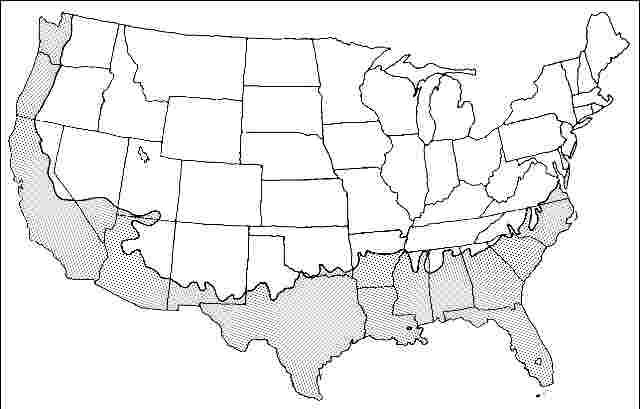
Description
Height: 15 to 25 feet
Spread: 20 to 25 feet
Crown uniformity: irregular
Crown shape: vase, round
Crown density: moderate
Growth rate: fast
Texture: fine
Foliage
Leaf arrangement: alternate (Fig. 3)
Leaf type: simple
Leaf margin: entire, serrate
Leaf shape: spatulate, oblanceolate, oblong
Leaf venation: pinnate
Leaf type and persistence: evergreen, fragrant
Leaf blade length: 1 to 6 inches
Leaf color: dark green
Fall color: no color change
Fall characteristic: not showy
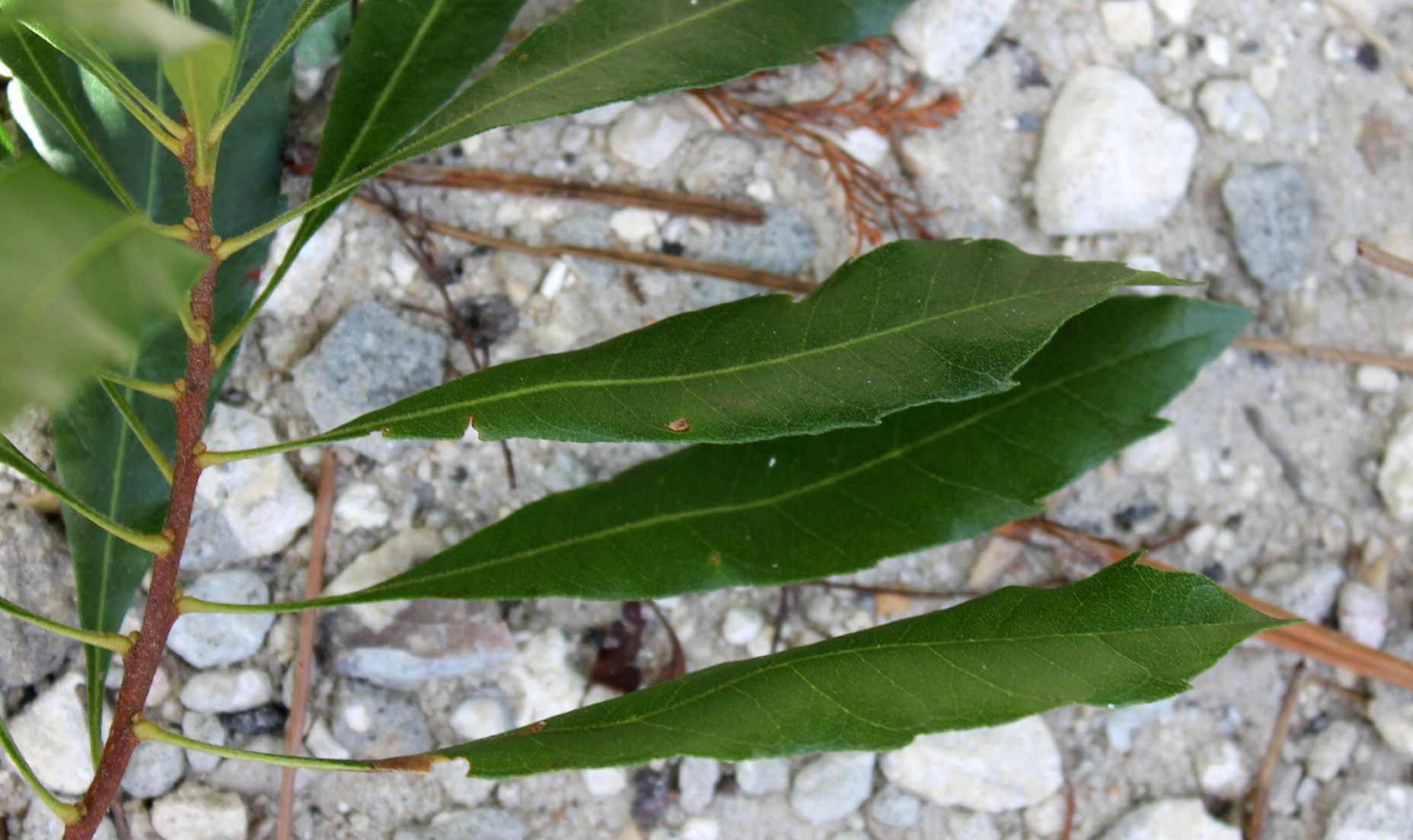
Credit: UF/IFAS
Flower
Flower color: pinkish-brown catkins
Flower characteristics: not showy; emerges in clusters Flowering: spring

Credit: UF/IFAS
Fruit
Fruit shape: round
Fruit length: 1/8 inch
Fruit covering: fleshy drupe
Fruit color: blue-gray
Fruit characteristics: attracts birds; not showy; fruit/leaves not a litter problem
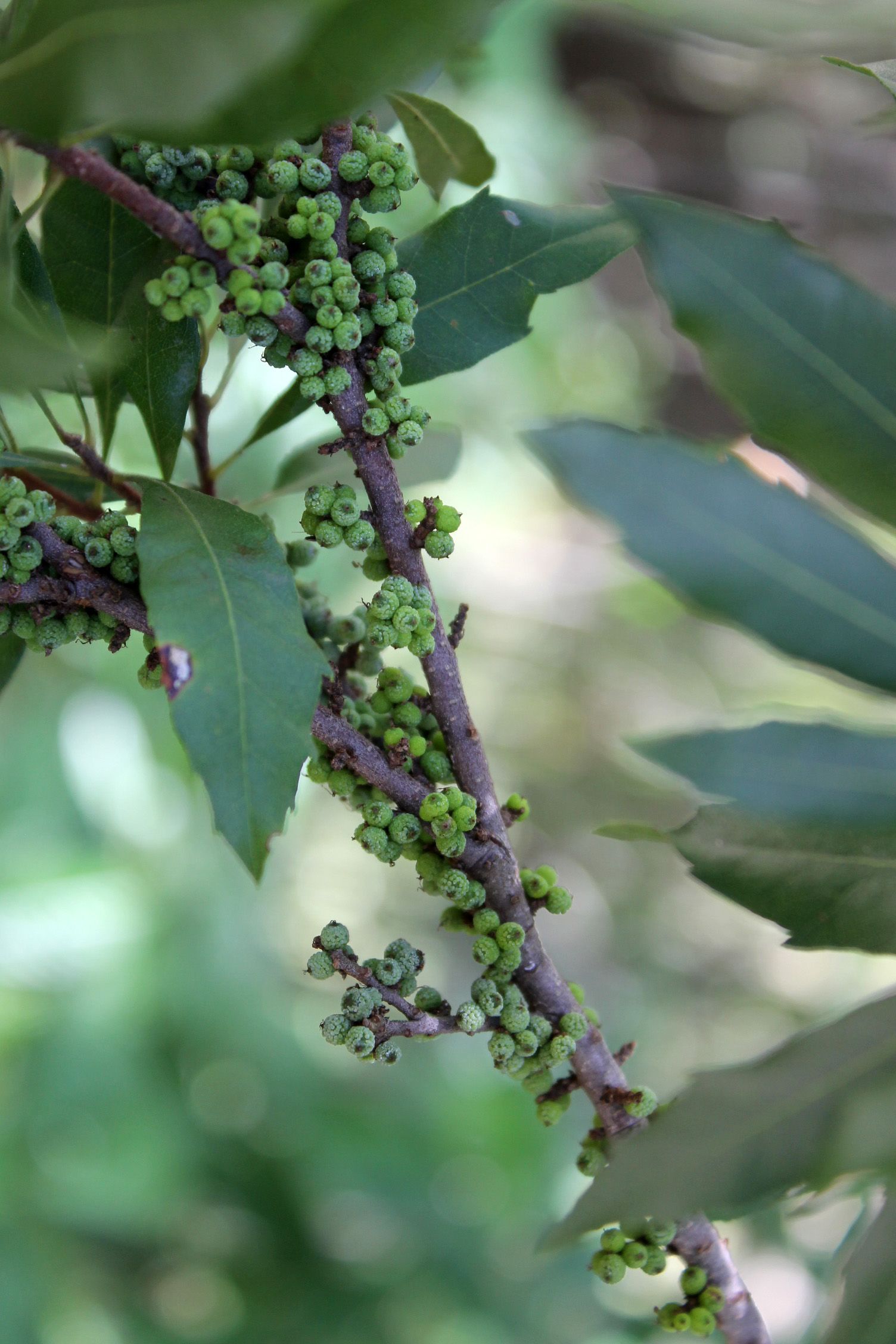
Credit: UF/IFAS
Trunk and Branches
Trunk/branches: branches droop; showy; typically multi-trunked; no thorns
Bark: light gray to almost white, dotted with lenticels when young, then becoming smooth or almost smooth with age
Pruning requirement: needed for strong structure
Breakage: susceptible to breakage
Current year twig color: brown, gray
Current year twig thickness: thin
Wood specific gravity: unknown
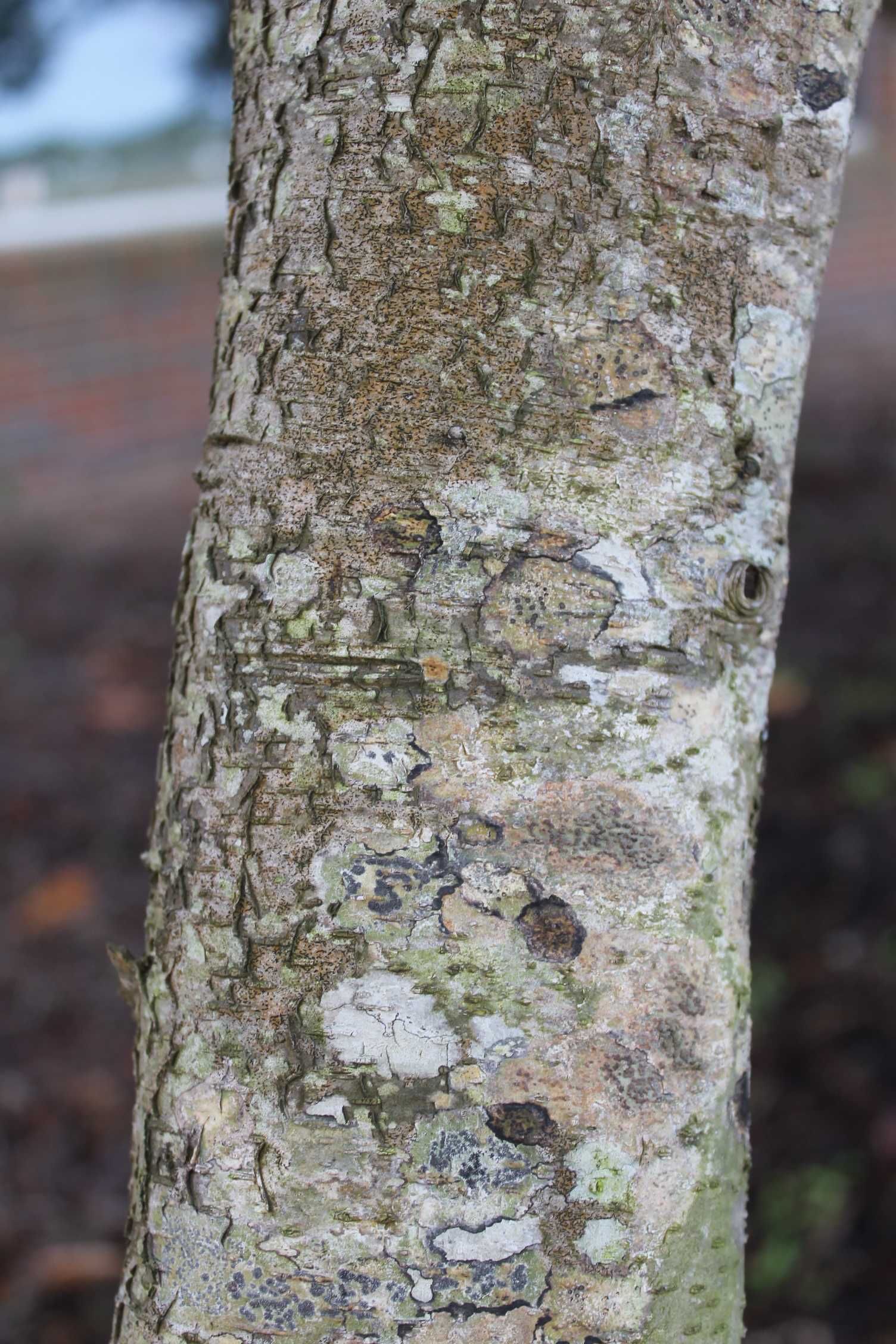
Credit: Gitta Hasing, UF/IFAS
Culture
Light requirement: full to partial shade
Soil tolerances: clay; sand; loam; alkaline; acidic; wet to well-drained
Drought tolerance: moderate
Aerosol salt tolerance: high
Other
Roots: not a problem
Winter interest: no
Outstanding tree: no
Ozone sensitivity: unknown
Verticillium wilt susceptibility: unknown
Pest resistance: resistant to pests/diseases
Use and Management
Very tough and easily grown, waxmyrtle can tolerate a variety of landscape settings from full sun to partial shade, wet swamplands or high, dry and alkaline areas. Growth is thin in total shade. It is also very salt-tolerant (soil and aerosol), making it suitable for seaside applications. It is adapted to parking lot and street tree planting, especially beneath powerlines, but branches tend to droop toward the ground, possibly hindering flow of vehicular traffic if not properly trained and pruned. Set them back from the road if used as a street tree so drooping branches will not hinder traffic. Removing excess shoot growth two times each year eliminates the tall, lanky branches and reduces the tendency for branches to droop. Some landscape managers hedge the crown into a multi-stemmed dome-shaped topiary. Plants spaced 10 feet apart, maintained in this manner, can create a nice canopy of shade for pedestrian traffic.
Plants should be watered well until established and will then require no further care. The only drawback to the plant is its tendency to sprout from the roots. This can be a nuisance as they need to be removed several times each year to keep the tree looking sharp. However, in a naturalized garden this thick growth could be an advantage, since it would provide good nesting cover for wildlife. Only female trees produce fruit provided there is a male nearby, but seeds do not appear to become a weed problem in the landscape.
The cultivar ‘Pumila’ is a dwarf form, less than three feet high. Myrica pensylvanica (Morella pensylvanica), northern bayberry, is a more cold-hardy species and the source of wax for bayberry candles.
Propagation is by seeds, which germinate easily and rapidly, tip cuttings, division of the stolons or transplanting wild plants.
Pests
Caterpillars and mites may occasionally attack the foliage. Webworms common in some landscapes—prune to remove infestation.
Diseases
Cankers may form on old branches and trunks and kill them. Also, a lethal wilt disease caused by the fungus Fusarium oxysporum and Fusarium spp. has been recently noted attacking waxmyrtle plants in central and south Florida. The vascular tissue is irregularly stained purple but not decayed as a result of the disease. Root injury and nitrogen fertilization encourage the disease.
References
Koeser, A. K., Hasing, G., Friedman, M. H., and Irving, R. B. 2015. Trees: North & Central Florida. University of Florida Institute of Food and Agricultural Sciences.
Koeser, A.K., Friedman, M.H., Hasing, G., Finley, H., Schelb, J. 2017. Trees: South Florida and the Keys. University of Florida Institute of Food and Agricultural Sciences.